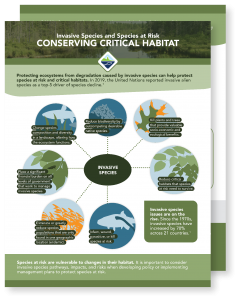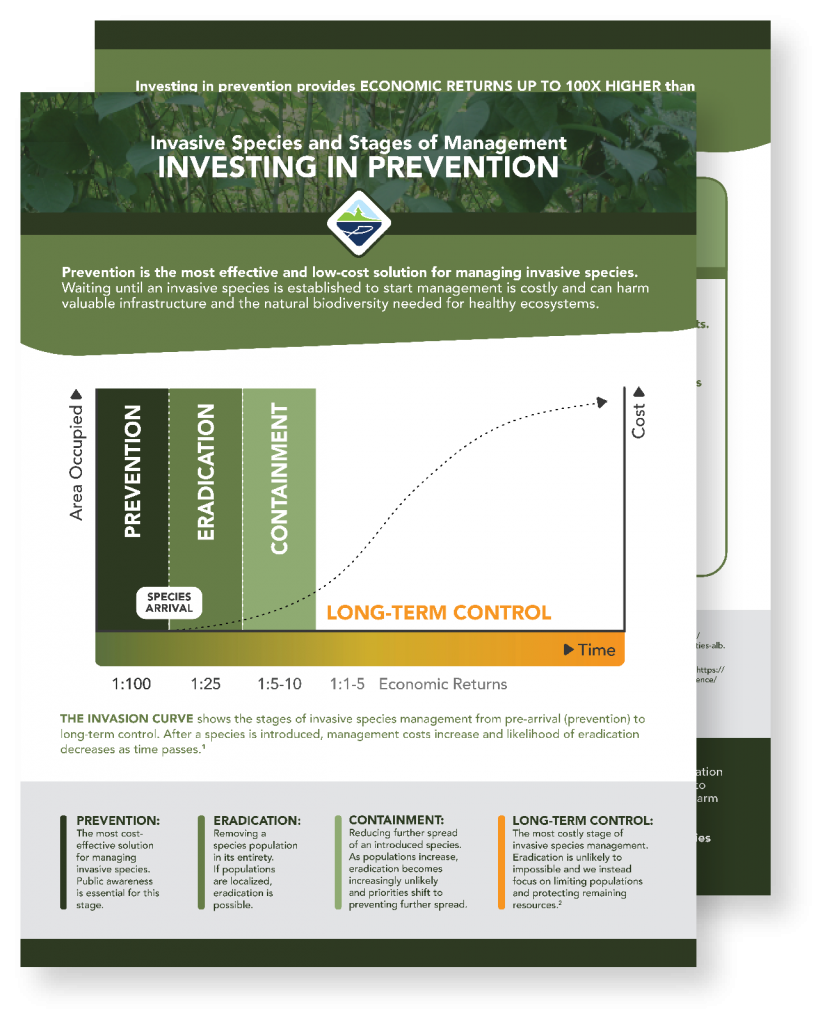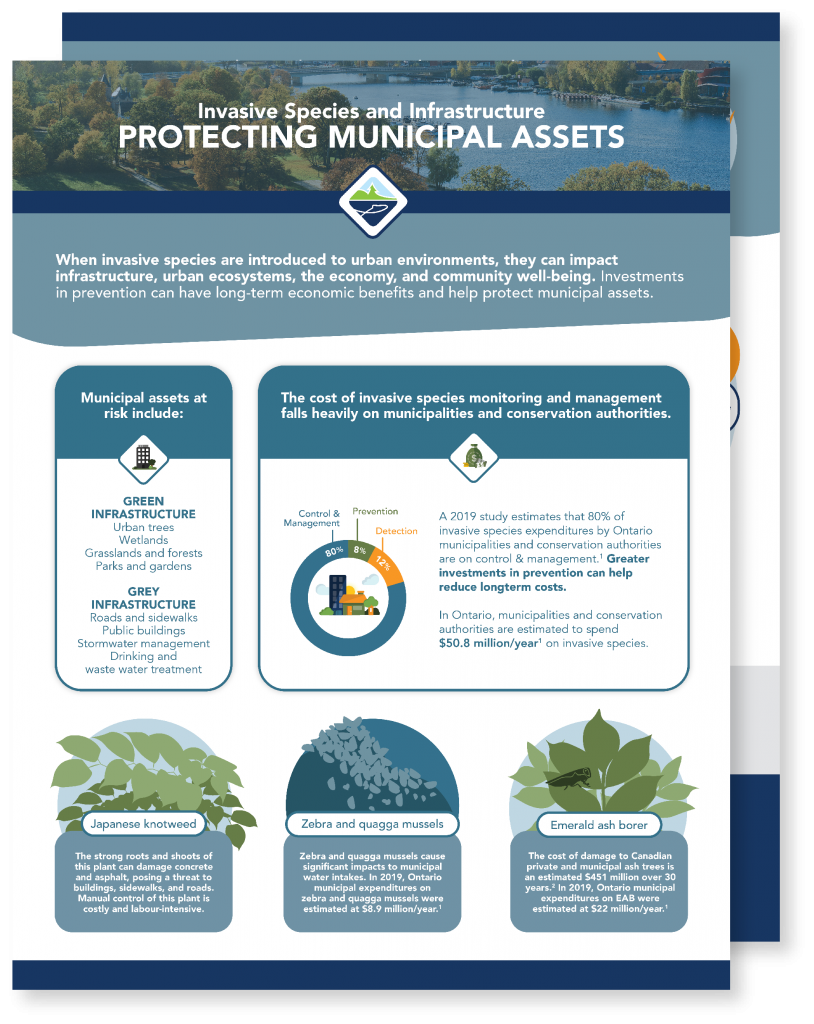Invasive species and species at risk
Protecting ecosystems from degradation caused by invasive species can help protect species at risk and critical habitats. In 2019, the United Nations reported invasive alien species as a top-5 driver of species decline.
Invasive species can:
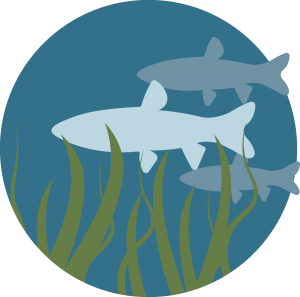
Change species composition and diversity in a landscape, altering how the ecosystem functions.
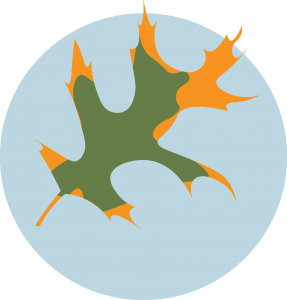
Kill plants and trees that provide valuable socio-economic and ecological benefits.
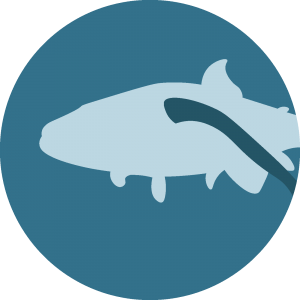
Infect, wound, parasitize, or kill species at risk.
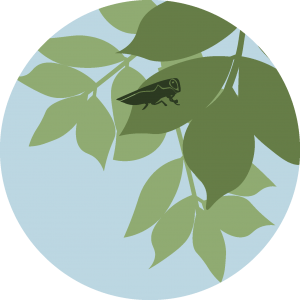
Place a significant financial burden on all levels of government that work to manage invasive species.
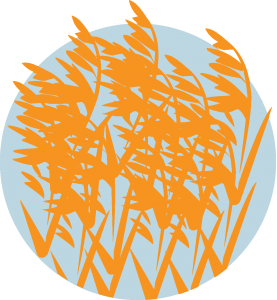
Eliminate or greatly reduce species populations that are only found in one geographic location (endemic).
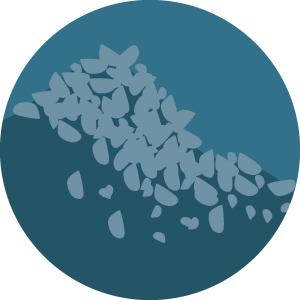
Reduce biodiversity by outcompeting desirable native species.
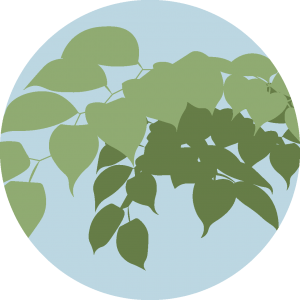
Reduce critical habitats that species at risk need to survive.
Invasive species issues are on the rise. Since the 1970s, invasive species have increased by 70% across 21 countries.
Case study: Garlic mustard vs. American ginseng

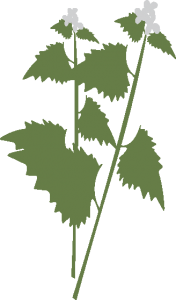
As of 2020, there are 622 wildlife species at risk in Canada. Many of these species, including lake sturgeon (threatened by sea lamprey) and monarch butterflies (threatened by dog-strangling vine), are impacted by invasive species.
American ginseng (top photo) is a culturally and ecologically important plant species in Canada. On the list since 2008, American ginseng is important for biodiversity and has long been used in traditional medicine by Indigenous peoples.
American ginseng is threatened by garlic mustard (bottom photo), an aggressive invasive plant that competes for resources, changes soil chemistry, produces up to 60,000 seeds annually, and has populations that can double in size every four years.
By removing and preventing the spread of garlic mustard, land managers can support the protection and recovery of American ginseng.
Case study: Species protection at Point Pelee National Park
Point Pelee National Park is working to protect multiple species at risk, including yellow-breasted chat, American water-willow, Blanding’s turtle, and five-lined skink.
Key actions include:
- Managing invasive species, such as purple loosestrife and phragmites, which threaten the park’s large freshwater marsh
- Protecting breeding grounds of birds and turtles from being degraded by invasive species
- Reducing the threat of habitat disturbance via invasive species to critical areas through legal protection, public awareness, and stewardship
What can you do?
Species at risk are vulnerable to changes in their habitat. It is important to consider invasive species pathways, impacts, and risks when developing policy or implementing management plans.
On an individual level, we can all take actions to prevent the spread of invasive species and protect species at risk:
- Clean, drain, and dry your boating and angling equipment to prevent the spread of aquatic invasive species
- Clean your boots and hiking gear before leaving an area
- Don’t move firewood to prevent the spread of invasive pests
- Don’t dump your bait
- Report all sightings of invasive species!
Resources
Further Reading
Invasive Species Pathway of Spread
Thematic Assessment Report on Invasive Alien Species and their Control

